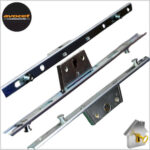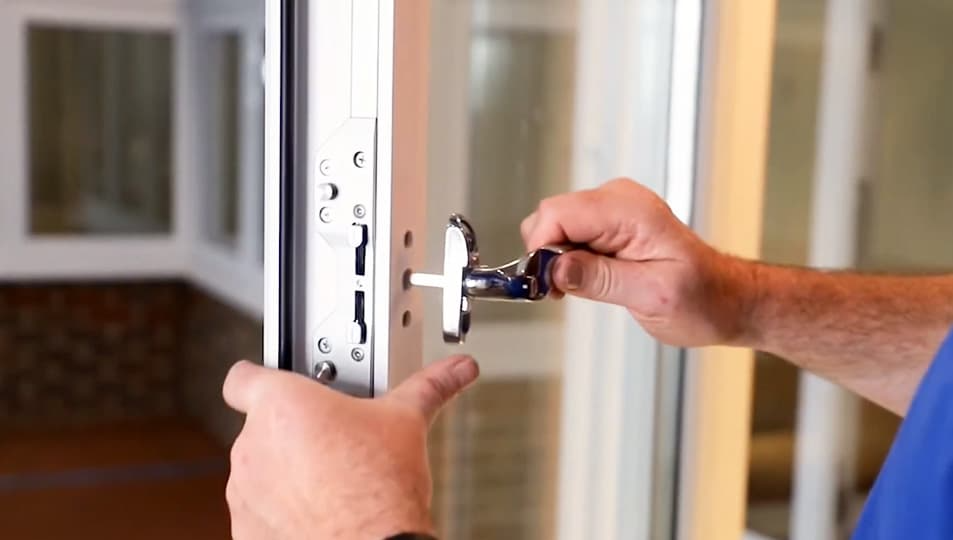25 Unexpected Facts About Replace Lock Upvc Door
작성자 정보
- Eli Keiser 작성
- 작성일
본문
 replace window lock repairs near me locks upvc; www.Demilked.com, double glazing window lock repairs on Your UPVC Door Yourself
replace window lock repairs near me locks upvc; www.Demilked.com, double glazing window lock repairs on Your UPVC Door Yourself You can change the lock on your upvc door yourself, provided that you have full access to both sides of the handle faceplate. You'll also require a screwdriver, a long bolt, and the key.
You can change the lock on your upvc door yourself, provided that you have full access to both sides of the handle faceplate. You'll also require a screwdriver, a long bolt, and the key.Sometimes a uPVC mechanism may become stuck due to a lack of lubrication or if something has broken inside. If you know what to do, it's easy to repair.
Prepare for repairs
uPVC doors are susceptible to a variety of problems and some are more significant than others. It is possible to repair the issue yourself if your uPVC lock is stuck or is misaligned. It is important to ensure that you do not damage the mechanism that locks your door in order to avoid making the issue even more severe. You should also avoid using lubricants like oil or grease, which can cause the locking mechanism become sticky. Instead, you should opt for a light machine oil or graphite powder since they are safe and will not harm the uPVC door.
A uPVC barrel for doors isn't easy to remove once it is installed, so be aware of what you are doing before you begin. You should seek out locksmiths if you're not experienced with this type of repair. They will make sure that the work is done properly. This will also help you save time since they will be able to finish the job quickly and efficiently.
The first step is to remove the screw that holds the lock barrel in the first place. It should be distinct from all of the other screws on the door and is located on the inside edge of the edging, near the lock faceplate. After removing the screw then you can slide the barrel out. Once the lock is removed, you can then remove the handle and replace it with the new one.
It is important to know that a locked uPVC can be shut and opened without the handle. The uPVC has a built-in security system known as multipoint locking. The system is comprised of two hooks at the bottom and top of the door, as well as a latch or dead bolt in the middle. This creates a very strong and secure door.
If you can't open your uPVC doors, it's most likely that the locking cylinder is malfunctioning. A uPVC door lock cylinder is designed to be fitted with a key and so is not as easy to remove or break as other types of locks. You can try fixing the cylinder yourself, but it is better to call a locksmith if you are not experienced in this kind of repair.
Take the Cylinder off
The cylinder, also referred to as the barrel, is a tiny component in the handle of a uPVC door that enables you to lock and unlock the door. It is typically made from pin-based technology and, while it has been effective for a long time, it is now being targeted by criminals looking to increase their chances of gaining entry into your home. By replacing the cylinder with a higher-grade window lock repair near me, you can significantly increase the security of your home without the need to purchase an entirely new locking mechanism.
To remove the handle first, you must loosen the screws holding it in place with the Philips-head driver. Save the screws to use them to reconnect the handle once the job is completed. Find the pinhole that binds the handle to the trim. Find an old-fashioned paper clip or pin that can be straightened, and then inserted into the hole. Apply pressure to the pin while rotating the handle until it releases. When it is released, pull the handle toward you to pull back the latch inside the cylinder.
After the cylinder has been loosened and removed, you can remove it manually. Be careful not to damage the threads either side of the cylinder, or the cam that is in the middle. If the cylinder doesn't slide out easily, the handle furniture or locking mechanism might be causing it to pinch. It will need to be released to allow it to slide out.
When you are ready to replace the cylinder, you should look for one that has been certified by an independent testing organization to meet minimum standards for anti-snap and bump security. There are a variety of grades of locks available on the market, therefore it is essential to know the requirements prior to deciding to select an alternative.
If you can, bring the cylinder you have used to the store to be sure you are purchasing a matching replacement. There are about 25 different sizes of lock cylinders that are available which is why it is crucial to measure yours accurately.
Reinstalling Cylinder
If your locks aren't functioning properly, you might need to replace them. You might need to replace your locks for various reasons, including to increase security or satisfy insurance requirements. It is possible to replace the lock if you've lost your keys, or if you recently relocated. Whatever the reason, replacing your uPVC door lock isn't difficult and can be accomplished by most people with a bit of help.
First, ensure that the door is propped or secured in a way that it will not close during the process. Remove the screws that secure the handle with a screwdriver. Remove the screws slowly or small pieces of the handle could fly off. Slide out the exterior and interior handles at the same time after removing the screws. This is a bit difficult, but it's crucial not to push anything. This could damage the mechanism for handling and cause the handles to break.
Find the screw of the cylinder at the edge of the door after removing the handles. It's usually an enormous screw that is in line with the lower portion of the cylinder. It should have a different colour from the other screws and be easy to identify. Twist the screw to loosen it and then remove it.
After removing the screw, you will be able see the cylinder within its socket. Insert your key, and turn it both left and right. Doing this will help to unlock the cylinder. Once you have it unlocked, you can use moderate pulling to remove the cylinder from its socket.
Place the new cylinder in its socket after removing the previous one. It should be able to go in without difficulty, but if you're struggling try wriggling and pulling again. If you're not able to get the cylinder into the lock, you might want to replace it.
If you are replacing a euro-cylinder ensure that it comes with anti-snap and anti-bump protection. These features will enhance the security of your home and make it difficult for thieves to break into your home.
Reinstalling the Handle
There are a couple of reasons that your uPVC handle might not be working properly. Sometimes it's a matter of wear and tear, but other times the issue is more serious. It could be that the cylinder for the lock is faulty and cannot be fixed and it's time to replace it with a new one.
The first thing to do is to remove the handle that was previously attached to the door. It's not difficult and usually you can do it by unscrewing the two screws that hold the handle in place using a screwdriver. After the screws have been removed, there should be nothing securing the handle to the door. it should be able to pull away with very little effort.
It's a great idea to clean the spindle and back plate after removing the handle. This will ensure there is no dirt or grime to cause problems with the replacement handle. You should also clean the handle with a soft, clean cloth to get rid of any dirt or dust that could impact its performance.
Before you install a new handle, ensure that it will fit. In most cases the hook plate as well as the roller face plate are recessed into the centre lock case. There shouldn't be a gap between the two. If the handles do not fit properly it can exert lots of pressure on the central lock case, and there is the possibility that something could break inside.
When you are ready to reinstall the handle, start by sliding the new spindle into the hole on the exterior handle and then into the one on the inside handle. It is possible to tap the spindle gently using a mallet or hammer to get it to slide into position. Once you have it in place there is probably an retaining screw at the end of the spindle that must be tightened and align the holes, and then replace this screw.
관련자료
-
이전
-
다음
댓글 0
등록된 댓글이 없습니다.
